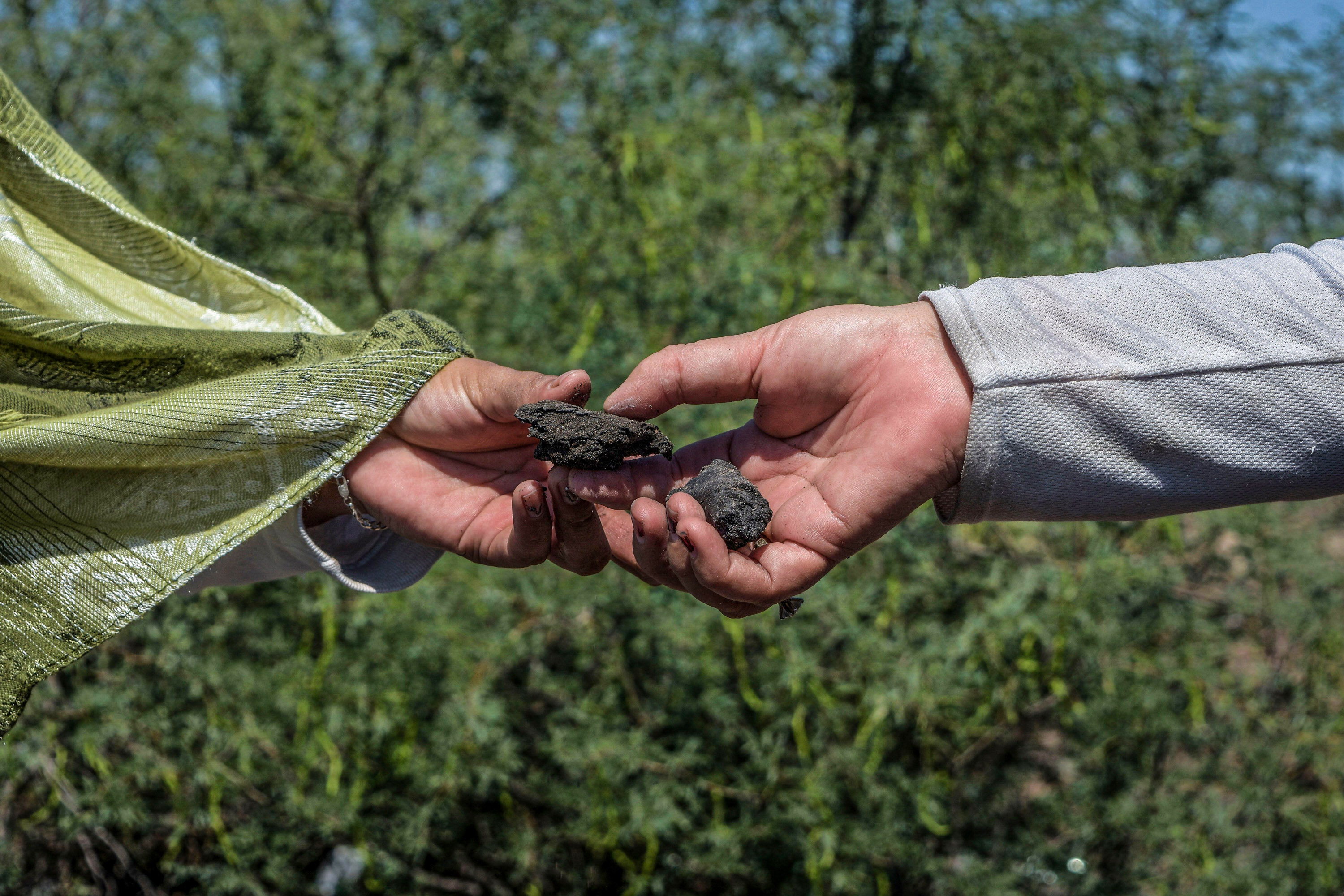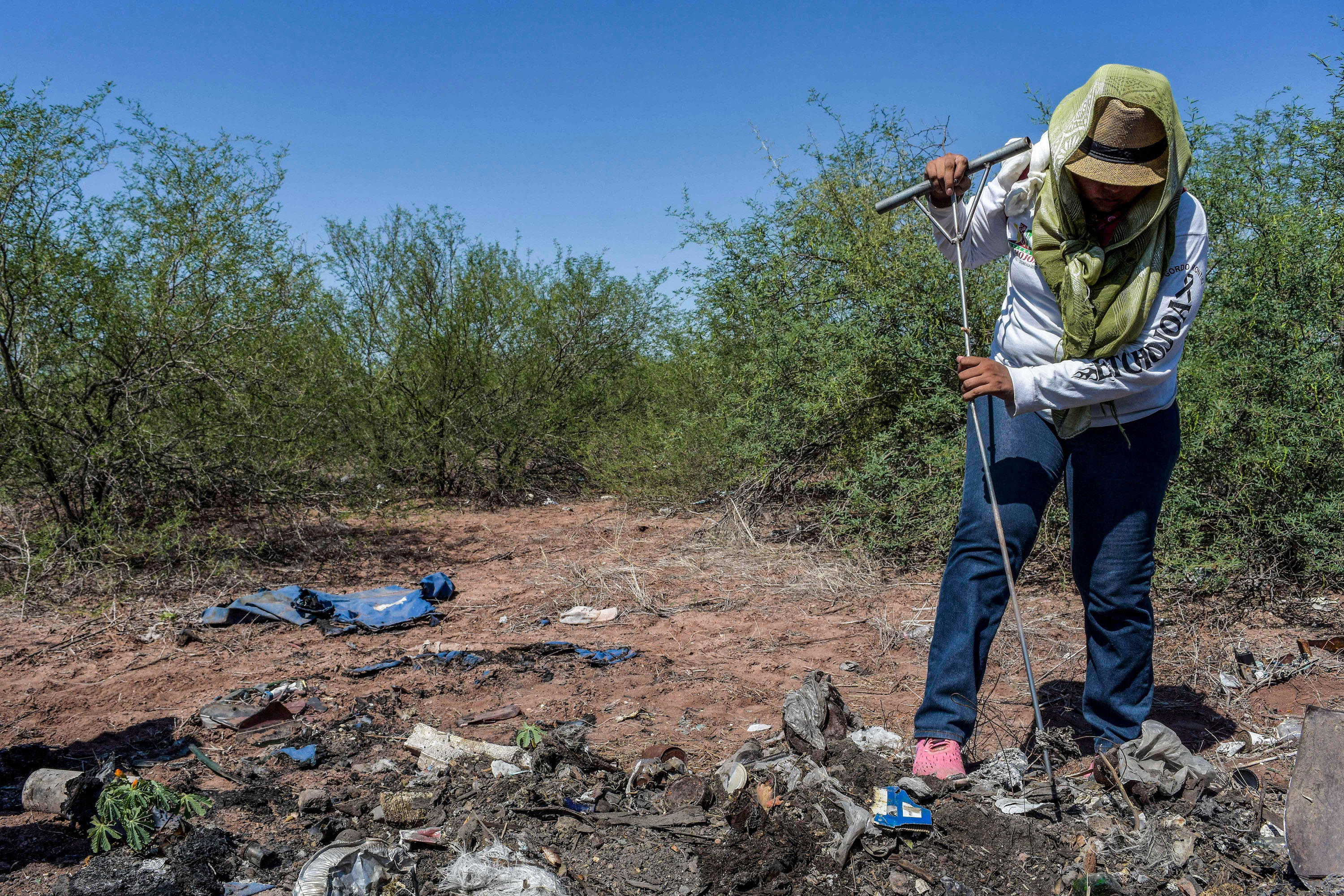“Attention Jalisco. Do you know the location of a clandestine grave of corpses?” The question, aimed at people in the populous Mexican state, was posed on Twitter in February by Madres Buscadoras de Sonora, an organization of mothers searching for their missing loved ones.
Dozens of people responded. Neighbors who had witnessed clandestine burials came forward, annotating Google Maps to point toward graves beneath vacant houses. Messages also came from “los arrepentidos,” the penitents—people who said they’d been involved in the burials and were moved to confess. Carrying picks and shovels, women from Madres Buscadoras arrived in the Chulavista neighborhood in the Jalisco municipality of Tlajomulco de Zúñiga. They began to dig.
Mexico has long struggled with a history of kidnapping. As of October 5, there were 105,984 people officially listed as disappeared in Mexico. More than a third have vanished in the past few years, during the current government of President Andrés Manuel López Obrador, commonly known as AMLO. Many of those missing are thought to have been kidnapped or forcibly recruited by criminal organizations. Most are likely dead, their remains buried in clandestine graves in rural areas, neighborhoods, and farmlands or scattered in the vast unoccupied terrain near the US-Mexico border. Some may be among the more than 52,000 unidentified bodies lying in morgues, common graves, and universities. Around a quarter are women and girls, most likely victims of sexual exploitation, human trafficking, or femicide.
In a departure from previous administrations, AMLO’s government has publicly recognized the scale of the crisis and strengthened search and identification efforts. In March 2019, it inaugurated the National Search System, a mechanism that seeks to coordinate efforts among government agencies in the search for the disappeared. When the system launched, Karla Quintana, the head of the National Search Commission, recognized the work families have been doing on the ground, “virtually alone for years.” She promised: “Never again alone.”
But authorities are still hesitant to get involved in the search for the missing. And so the task continues to fall on families. Much of the work they do now happens over social media, where people widely distribute photographs of missing relatives, coordinate search efforts, and raise awareness of the problem. Through WhatsApp, Twitter, and Facebook, Madres Buscadoras has created a platform to engage citizens and work to accelerate the search for the disappeared. Every day, the group receives information about missing people and the location of possible graves—so many that they do not have the resources to investigate them all.
The work is not without challenges. When Madres Buscadoras began searching for bodies in Chulavista, they were closely watched—and photographed—by local authorities. After the collective met with the governor of Jalisco, local police joined the search the following day. Ultimately, Madres Buscadoras uncovered 221 jumbo trash bags of body parts. By April, the prosecutor’s office said the official tally was up to 44 bodies, with bags still to process.
Families who conduct their own investigations can face opposition and threats both from organized crime and from government officials, who may collude with organized crime groups and may not like the optics of a hunt for missing people in their region. Under the country’s landmark General Law of Forced Disappearance, which was approved in 2017 after pressure from families, authorities must take immediate steps to search for a missing person and investigate the crime, yet this is still not the reality for thousands of families. “Although things have changed a little, it has always been the same situation on the part of the authorities. They shake things off, saying ‘It’s not up to us, it’s up to others,’” says Martín Villalobos, a member of the National Citizen Council, a consultative body of the National Search System.
But other parts of Mexican society are now responding to the plight of the families. “Social networks work very well here. People have been supporting us a lot even though they don’t have disappeared relatives,” says Araceli Hernández, who used to be a member of the main Madres Buscadoras group but recently formed a new collective. “The simple fact of listening to the pain of a mother, an aunt, makes them support us with tools, groceries, water, Gatorades, and tons of information. That makes us hold on tighter.”
Gathering together
On October 30, 2015, Ceci Flores’s then 21-year-old son, Alejandro Guadalupe, disappeared without a trace in the city of Los Mochis in northern Sinaloa. Less than four years later, on May 4, 2019, hit men kidnapped her other two sons—Marco Antonio and Jesús Adrián—in her home state of Sonora.
Flores approached the authorities. But when she didn’t see an immediate response, she launched her own search, broadcasting live on social media. Six days later, she received a call saying her sons would be freed at a specific location. When she arrived, only her youngest, Jesús Adrián, was there. To date, Flores hasn’t heard from Marco Antonio.
The same day she recovered Jesús Adrián, Flores created a Twitter account and began to share photos of her still-missing sons. That was the genesis of Madres Buscadoras. Since then, more than 2,000 mothers and relatives of missing people have joined. “I didn’t have the support of the authorities in the search for my children. So I started these searches, inviting families. Every day more families joined me, because there were many disappeared,” she says.

The effort is not without danger. In July last year, 28-year-old buscadora Aranza Ramos was abducted from her home and fatally shot. Ramos had been searching for her husband, Brayan Omar Celaya Alvarado, since he went missing in December 2020. Flores received death threats after Ramos was killed, forcing her to leave her hometown in Sonora.
Madres Buscadoras has issued a public plea to organized crime groups to allow them to do their work. But there is a general climate of hostility around the search for the missing, says Vladimir Cortés, digital rights program officer at the Mexico and Central America office of Article 19, a nonprofit advocacy group defending freedom of expression. “We are facing a government that denies that there are human rights violations, that denies that there are abuses against those who defend human rights,” says Cortés. “This generates a permissiveness to attack those who are defending human rights —relatives of disappeared persons—and try to cancel the work they do.”
To report or not to report
When psychology student Mónica Alejandrina Ramírez Alvarado disappeared, months before she was due to graduate from the National Autonomous University of Mexico in 2004, social media wasn’t as pervasive as it is today. There was still no national movement for the disappeared, nor a General Law of Forced Disappearance.
But families of the disappeared still face some of the same challenges, explains Villalobos, who is Mónica Alejandrina’s brother-in-law. “Most of the complaints have to be made at the local level, and the local level is always co-opted or is part of organized crime,” Villalobos says. “When filing a report, families are defenseless against the attacks of both criminals and authorities, and are also isolated from their own family—who, for fear of being related to the threats or revenge, move away from them.”

María de la Luz López Castruita remembers seeing mothers pasting missing person posters with their daughter’s faces in public places in the northern city of Torreón in the late 2000s, never thinking it would happen to her.
“Obviously there were no social networks back then, but there were other ways to support,” López says. She could have helped paste posters or joined the search. “But no,” she says. “We stayed with our arms crossed waiting for it to happen to us, and it did happen to us.”
After the disappearance of her then 17-year-old daughter, Irma Claribel, in 2008, López and her husband, Jesús Lamas, began to paste Irma’s photo on every possible lamppost, hoping that someone would give them information. They got two types of response: calls asking for money, from people claiming to know Irma’s whereabouts, and misogynistic swear words scratched on the posters.
Taking to social media was a logical next step for families of the missing. There was a marked rise in that activity after the onset of the pandemic, Villalobos says, when authorities declared it too risky to do fieldwork. “Many of us who belong to generations that perhaps were not very familiar with technology and social media have seen the opportunity to make visible our realities using our own voices,” he says.
But in some ways technology hasn’t made things easier, Villalobos notes; users are trolled by bots, fake accounts, and AMLO supporters. He says government supporters often accuse families of receiving financial support from opposition parties or foreign institutions such as the US Agency for International Development and the National Endowment for Democracy, groups that have a long history of funding nongovernmental organizations in Mexico.
There should be more training on social media safety, Cortés says—and a clear mechanism for legal recourse when people are threatened online. At the moment, it is a felony under federal law to threaten a person online, but Cortés says authorities often fail to investigate and prosecute such cases.
Off the radar
Around noon on Sunday, April 10, López received a phone call. A man told her he’d found human remains a few months back, while pulling up candelilla plants in the desert. López and her husband were exhausted. They were on the bus, riding back to their home in Torreón after spending two weeks leading a search brigade of more than 150 relatives of missing people in the nearby city of Monterrey. But they couldn’t afford to say no. Any piece of information could be a lead in their search for their daughter Irma Claribel. They called their son Jesús and asked him to pick them up in a town near the highway.
They hopped in Jesús’s truck, picked up the guide, and began a one-and-a-half-hour journey toward desert too rugged for the truck to traverse. Soon it was just López and Lamas following the guide on foot, hoping they would find human remains. “Even if it’s not my daughter, it can be someone else,” says López.
Authorities don’t want the media attention, she explains. They often step in to help search only after a massive discovery of human remains, one that would look bad for them to ignore.
After five hours of walking, it was starting to get dark and the place where the remains were supposedly found still looked distant. A recent leg injury started to slow down Lamas, who is 66. They realized they wouldn’t make it to the site. The walk back to the truck took until midnight. López and Lamas were scared. They arrived at their house around three in the morning, feeling deflated and exhausted.
Searches like this one, away from the media and authorities, are common. Bureaucracy and the extensiveness of the territory have forced mothers like López to carry out their own searches without security or resources.
“I have to be filling out papers and papers to make the authorities do the work,” López says. “But I don’t want them to make the process long. So when I find something, I talk to them and tell them: Here! Here it is.”
López says that she still does not know how to make a case, or search brigade, go viral. Authorities don’t want the media attention, she explains. They often step in to help search only after a massive discovery of human remains, one that would look bad for them to ignore.
The internet has allowed families to bypass the filters of the government and the media. “That is why social media is very useful for us: to make visible what we are experiencing,” says Flores. “This is not fiction—it’s a reality we live every day. Every day dead people appear. Every day people disappear. Every day we mothers are left without children.”
Chantal Flores is a freelance journalist based in Monterrey, Mexico.
